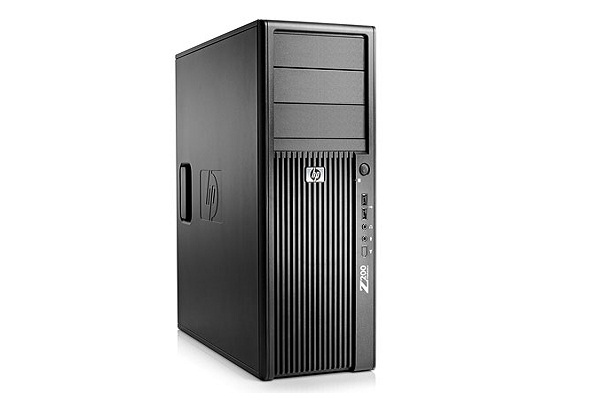HP Z200 Workstation review
Is bigger always better when it comes to business machines? We review the HP Z200 Workstation to find out.

The Intel Core i5 processor and dedicated Nvidia graphics may be overkill for many users, but the HP is a machine that offers impressive levels of power for reasonable prices. Factor in the rock-solid, easily upgradable chassis, and the Z200 could prove tempting for power users on a budget.

A quick glance at HP's new Z200 Workstation should show that this is a corporate machine that means business. The last couple of years have seen corporate PCs constantly downsize with smaller cases and weaker components, but this model - which boasts an Intel Core i5 processor and Nvidia QuadroFX graphics - resolutely bucks that particular trend.
The Core i5-670 processor, for instance, offers a tremendous amount of power. Its core clock speed of 3.47GHz is one of the highest since the heady days of the Pentium D, and the rest of the specification is equally impressive: Hyper-Threading means that the CPU's two cores can be used to run two processes at once, and Turbo-Boost allows power to be borrowed from idle cores to dynamically overclock busy ones.
Elsewhere, there's 512KB of L2 cache, 3MB of L3 cache and a 733MHz integrated GPU, and the Core i5's 32nm die - based on the Westmere architecture which is also used for more powerful Core i7 parts - helps increase efficiency and reduce power consumption.
The raft of impressive numbers translated to explosive real-world performance. In our application benchmarks, the HP returned a score of 1.92: far more powerful than many business machines on the market today, and more than capable of handling the most intensive of productivity applications.
The processor also contributed to a surprisingly low power draw. The powerful PC consumed just 55W when idling, and this figure rose to a mere 97W when motoring through our demanding benchmarks less than many desktop PCs use when idling.
HP has partnered this impressive CPU with a specialist graphics chip. Nvidia's QuadroFX 1800 is a mid-range part but still provides plenty of clout thanks to its 550MHz core clock, 768MB of 800MHz DDR3 RAM and 64 CUDA cores, which are vital for GPGPU applications.
Sign up today and you will receive a free copy of our Future Focus 2025 report - the leading guidance on AI, cybersecurity and other IT challenges as per 700+ senior executives
Mike Jennings has worked as a technology journalist for more than a decade and has been fascinated by computers since childhood, when he spent far too long building terrible websites. He loves desktop PCs, components, laptops and anything to do with the latest hardware.
Mike worked as a staff writer at PC Pro magazine in London for seven years, and during that time wrote for a variety of other tech titles, including Custom PC, Micro Mart and Computer Shopper. Since 2013, he’s been a freelance tech writer, and writes regularly for titles like Wired, TechRadar, Stuff, TechSpot, IT Pro, TrustedReviews and TechAdvisor. He still loves tech and covers everything from the latest business hardware and software to high-end gaming gear, and you’ll find him on plenty of sites writing reviews, features and guides on a vast range of topics.
You can email Mike at mike@mike-jennings.net, or find him on Twitter at @mikejjennings
-
 Anthropic says MCP will stay 'open, neutral, and community-driven' after donating project to Linux Foundation
Anthropic says MCP will stay 'open, neutral, and community-driven' after donating project to Linux FoundationNews The AIFF aims to standardize agentic AI development and create an open ecosystem for developers
By Ross Kelly Published
-
 Developer accidentally spends company’s entire Cursor budget in one sitting — and discovers worrying flaw that let them extend it by over $1 million
Developer accidentally spends company’s entire Cursor budget in one sitting — and discovers worrying flaw that let them extend it by over $1 millionNews A developer accidentally spent their company's entire Cursor budget in a matter of hours, and discovered a serious flaw that could allow attackers to max out spend limits.
By Emma Woollacott Published
-
 Global IT spending set to hit a 30-year high by end of 2025
Global IT spending set to hit a 30-year high by end of 2025News Spending on hardware, software and IT services is growing faster than it has since 1996
By Emma Woollacott Published
